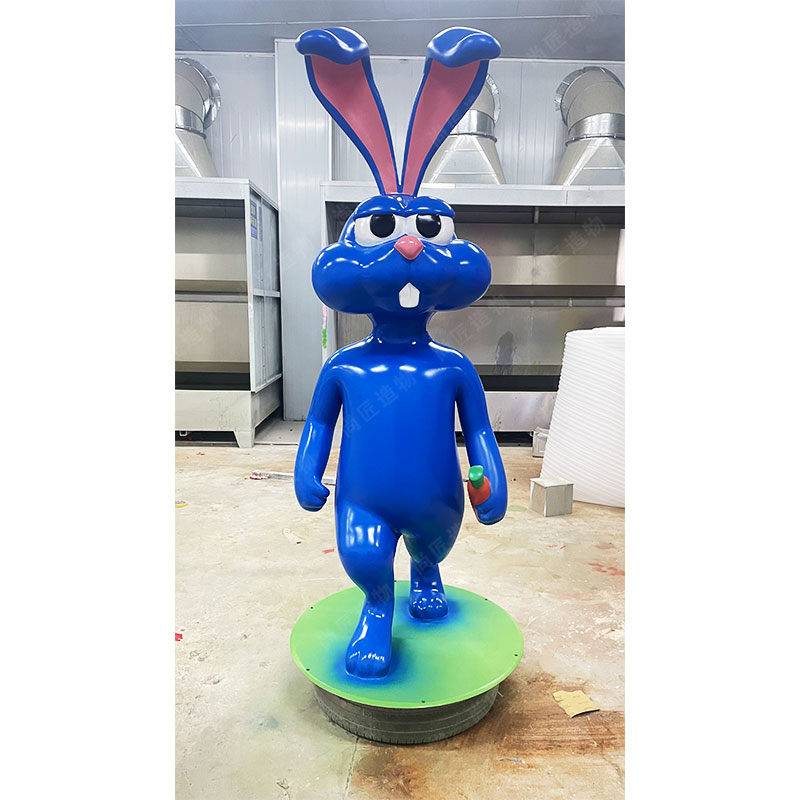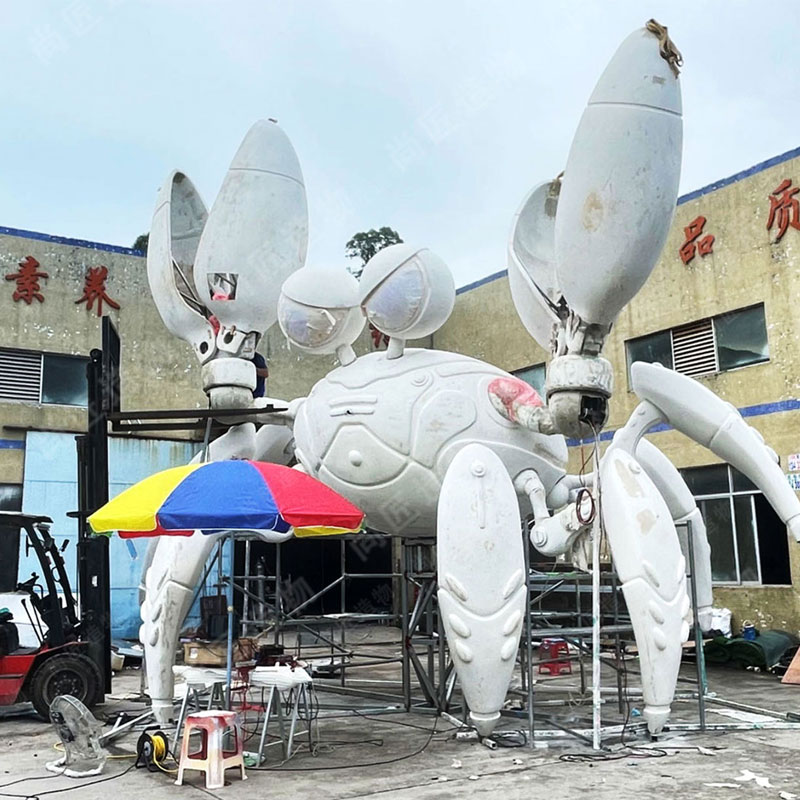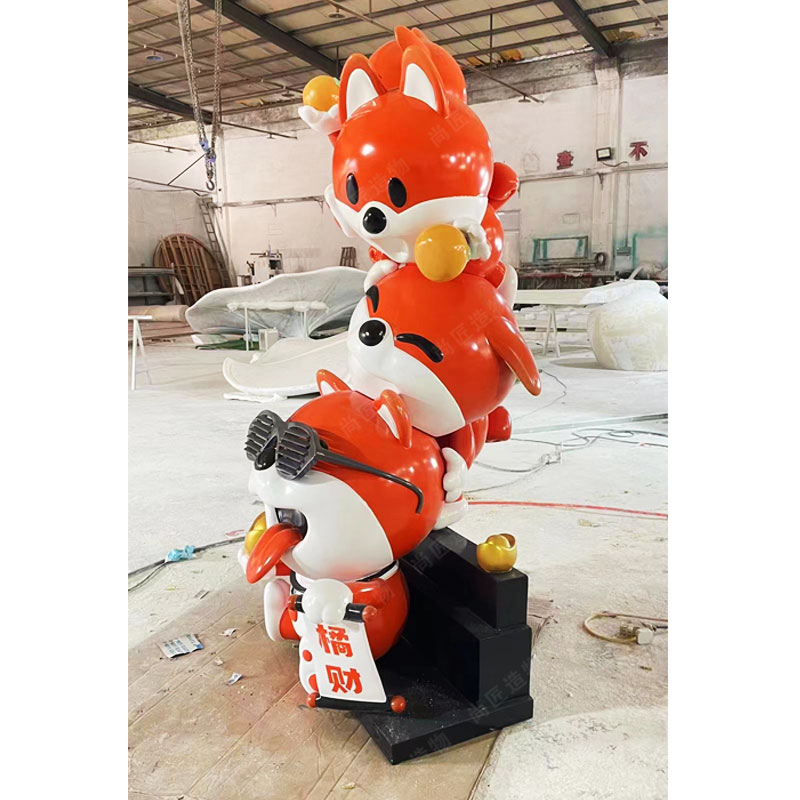Key Takeaways
Kinetic metal art with motors represents a fusion of industrial technology and artistic vision, where static sculptures gain lifelike motion through engineered systems. These works rely on three core elements:
| Component | Purpose | Common Types |
|---|---|---|
| Motors | Provide rotational energy | Stepper, servo, DC motors |
| Actuators | Convert energy into movement | Linear, pneumatic, hydraulic |
| Control Systems | Regulate speed/direction | Arduino, Raspberry Pi |
At its core, motorized kinetic art challenges the permanence of traditional metalwork. Electric actuators enable precise, repeatable motions—from slow undulations mimicking ocean waves to rapid mechanical spins. These systems often incorporate weather-resistant materials like stainless steel or powder-coated aluminum to withstand continuous operation.
"The magic happens when torque calculations meet artistic intuition—each gear ratio adjusts not just speed, but the sculpture's emotional impact." — Industrial sculptor Marco Fellini
A critical consideration is power efficiency. Many artists use low-voltage motors (12V-24V) paired with solar panels or hidden battery packs to maintain seamless motion without visible cables. For those exploring this medium, balancing weight distribution proves essential—a 10 lb bronze component typically requires a motor with at least 20% more torque than calculated to account for friction.
Tip: When designing motorized joints, incorporate slip rings to prevent wire tangling in rotating elements. This allows 360-degree movement cycles crucial for installations meant to operate uninterrupted for months.

How Motors Power Kinetic Metal Sculptures
Motors serve as the hidden heartbeat of kinetic metal art, converting electrical energy into rhythmic motion that brings rigid materials to life. Unlike traditional sculptures, which rely solely on form, motorized designs integrate components like servo motors, stepper motors, or low-voltage DC systems to orchestrate precise, repeatable movements. These mechanisms are often concealed within the artwork’s structure, allowing stainless steel or aluminum elements to rotate, pivot, or oscillate seamlessly. For example, stainless steel sculpture frameworks frequently use corrosion-resistant motors to ensure longevity in outdoor installations.
Engineers and artists collaborate to balance torque requirements with aesthetic goals—smaller motors enable subtle vibrations in delicate pieces, while industrial-grade systems drive large-scale installations. Gearboxes and sensors may refine motion patterns, creating illusions of fluidity in inherently rigid metal. Power sources, whether solar or wired, are strategically hidden to maintain visual focus on the sculpture’s choreography. This synergy of mechanics and artistry transforms static metal into dynamic narratives, where motion becomes as essential as the material itself.
Engineering Motion in Motorized Metal Art
Transforming static metal into dynamic art requires precise engineering to balance mechanical functionality with aesthetic vision. At its core, motorized kinetic art relies on calibrated systems—such as servo motors, gear trains, and programmable controllers—to orchestrate movement without compromising structural integrity. Engineers and artists collaborate to calculate torque, weight distribution, and material stress, ensuring components like rotating panels or oscillating elements move fluidly. For instance, Realistic sculpture often demands subtle, lifelike motion, achieved through micro-adjustments in motor speed and actuator timing.
Advanced systems may incorporate sensors or environmental triggers, allowing installations to respond to external stimuli like light or sound. However, the challenge lies in concealing technical elements—batteries, wiring, and mounting hardware—within the artwork’s design. This fusion of hidden mechanics and visible motion creates illusions of autonomy, as polished steel or bronze appears to shift organically. By integrating durable alloys with weather-resistant motors, artists ensure longevity for both indoor galleries and outdoor installations. Such technical rigor not only powers movement but elevates metal from rigid medium to living, breathing form.
Electric Actuators in Kinetic Art Design
Electric actuators serve as the hidden muscles of kinetic metal art, translating electrical energy into precise mechanical motion. Unlike traditional motors, these components offer controlled linear or rotational movement, allowing artists to program repetitive patterns or responsive shifts triggered by sensors. By adjusting stroke length, speed, and force, creators can synchronize multiple actuators to mimic natural rhythms—like swaying leaves or undulating waves—within rigid metal structures.
Modern installations often pair actuators with microcontrollers, enabling dynamic interactions with environmental factors such as wind, light, or audience proximity. For example, IP character sculpture designs use actuator-driven facial features to react to viewers’ movements, blending theatrical expression with industrial mechanics. Engineers favor brushless DC actuators for their quiet operation and durability, critical for public artworks exposed to weather or constant motion. This fusion of programmable precision and artistic intent transforms static metal into evolving narratives, where motion becomes as integral to the piece as the materials themselves.
Creating Endless Movement in Metal Artworks
Artists achieve perpetual motion in kinetic metal art by integrating precision motor systems with carefully engineered structural components. Unlike static sculptures, these works rely on servo motors, gear assemblies, and programmable controllers to orchestrate repetitive or evolving motion patterns. This requires balancing mechanical durability with artistic intent—gears must rotate smoothly without overpowering the sculpture’s visual harmony, while pivoting metal panels need calibrated torque to avoid structural stress.
A key challenge lies in synchronizing motorized elements with passive kinetic features, such as wind-responsive components, to create layered movement. For example, a motor-driven central axis might rotate a stainless steel spiral, while suspended copper pendulums sway independently from air currents. Artists often employ Arduino-based systems or Raspberry Pi controllers to manage timing sequences, enabling transitions between fast rotations and subtle vibrations.
The illusion of endless motion is enhanced through clever weight distribution and low-friction bearings, allowing pieces like kinetic sculpture to operate for years with minimal maintenance. Advanced designs incorporate light sensors or motion detectors to alter movement patterns based on environmental input, ensuring no two viewings are identical. By merging industrial-grade mechanics with artistic vision, these works transform rigid metal into fluid, ever-changing installations.
Tech-Driven Sculpture Mechanics Explained
The mechanics behind kinetic metal art with motors rely on precise integration of mechanical components and artistic vision. At its core, motorized systems—such as servo or stepper motors—act as the "muscles" of these sculptures, converting electrical energy into controlled motion. Engineers and artists collaborate to design gear systems, pulleys, or cam mechanisms that translate rotational motor output into fluid, rhythmic movements. For example, a sculpture might use interconnected gears to create cascading waves of motion through steel panels, mimicking natural patterns like wind-blown leaves.
Advanced control systems, including programmable logic controllers (https://en.artmovr.com/) techniques, occasionally complement metal frameworks to reduce load on motors. By balancing torque calculations with aesthetic intent, creators achieve sculptures that appear both effortless and endlessly captivating.

Motor Systems for Kinetic Art Installations
Motor systems form the operational backbone of kinetic metal art, translating electrical energy into controlled motion. These systems typically incorporate stepper motors, servo motors, or low-voltage DC motors, selected based on the sculpture’s scale, speed requirements, and power efficiency. For instance, stepper motors enable precise angular movements ideal for intricate geometric patterns, while servo motors offer torque control for heavier metal components. Engineers often integrate programmable microcontrollers like Arduino or Raspberry Pi to synchronize motor operations with environmental sensors or pre-set choreography.
A critical challenge lies in balancing mechanical durability with aesthetic subtlety. Motors are frequently housed within weatherproof enclosures or disguised as structural elements, ensuring seamless integration with the artwork’s visual language. Innovations in brushless motor technology have reduced noise and maintenance needs, allowing installations like Cartoon sculpture to maintain silent, continuous operation in public spaces. Custom gear systems further refine motion types—converting rotational force into undulating waves or pendulum-like swings—while power management solutions, such as solar-charged batteries, support sustainable outdoor displays. By merging industrial-grade mechanics with artistic vision, these systems transform rigid metal into fluid, ever-changing narratives.

Blending Mechanics and Metalwork in Art
Kinetic metal art represents a unique fusion of industrial engineering and traditional craftsmanship. Unlike conventional sculptures, which rely solely on static forms, these works integrate mechanical systems—such as gears, motors, and actuators—to produce controlled motion. Artists working in this field must master both metalworking techniques like welding and soldering, as well as principles of mechanical design. This dual expertise allows them to transform rigid materials like steel or aluminum into dynamic installations that appear almost alive.
The process begins with designing structural frameworks capable of supporting motorized components while maintaining aesthetic integrity. For instance, rotating elements might be balanced using counterweights, or joints may be engineered to mimic organic movement. Advanced tools, such as CNC machines, often assist in shaping precise parts, but manual craftsmanship remains essential for refining textures and finishes. By merging technical precision with artistic vision, creators achieve a harmony where mechanical systems enhance—rather than overshadow—the metal’s natural beauty.
This interdisciplinary approach also challenges traditional boundaries between art and technology. While motors provide the energy for motion, the metal itself dictates the sculpture’s rhythm and flow, creating a dialogue between human ingenuity and material constraints. The result is art that evolves over time, inviting viewers to reconsider relationships between stillness, motion, and industrial materials.
Dynamic Metal Art: Motorized Design Secrets
While earlier sections explained how motors enable movement in kinetic sculptures, the true artistry lies in concealing mechanical systems while maximizing visual impact. Artists balance torque requirements with aesthetic goals, often embedding compact stepper motors or servo drives within hollow metal frameworks. Precision gear ratios ensure smooth transitions between programmed motions—whether rhythmic rotations or unpredictable oscillations—without compromising structural integrity.
A key challenge involves weatherproofing components for outdoor installations, where brushed stainless steel housings protect circuitry from moisture while maintaining sleek silhouettes. Advanced practitioners employ microcontroller-based timing systems to create non-repeating movement patterns, achieving the illusion of autonomous life in metal forms. Hidden counterweights and magnetic couplings further eliminate visible joints, allowing observers to perceive motion as emerging organically from the artwork itself.
This fusion demands equal mastery of metallurgy and mechatronics—for instance, selecting aluminum alloys for their vibration-dampening properties or calibrating motor speeds to complement a sculpture’s resonant frequencies. By treating mechanical elements as intrinsic to the creative process rather than mere functional additions, artists transform industrial components into poetic expressions of engineered motion.

Conclusion
Kinetic metal art with motors represents a unique convergence of engineering precision and artistic vision. By integrating motorized systems, artists transform rigid materials into dynamic installations that challenge traditional notions of sculpture. These works rely on carefully calibrated components—such as electric actuators and programmable controllers—to achieve seamless, continuous motion. While the mechanics enable movement, the artistry lies in balancing form and function, ensuring each piece interacts harmoniously with its environment.
This fusion of disciplines opens new possibilities for creative expression, allowing sculptures to respond to external stimuli like light, wind, or viewer interaction. As technology advances, motor-driven kinetic art continues to evolve, bridging the gap between industrial innovation and aesthetic exploration. Whether displayed in public spaces or galleries, these works remind us that motion itself can become a medium, reshaping how we perceive metal’s static nature into something alive and ever-changing.

Frequently Asked Questions
What defines kinetic metal art compared to traditional sculpture?
Kinetic metal art incorporates moving components powered by motors or actuators, whereas traditional sculptures remain static. Motion transforms the piece, creating evolving visual patterns and interactive experiences.
How do motors integrate with metal artworks without disrupting aesthetics?
Motors are often concealed within structural elements or designed as minimalist mechanical features. Engineers balance torque and noise reduction to ensure seamless interaction between motion and artistic form.
What types of motors are commonly used in these sculptures?
Low-voltage DC motors, stepper motors, and servo systems are popular for their precision and adaptability. Solar-powered setups are increasingly used for sustainable outdoor installations.
Can kinetic metal art withstand outdoor conditions?
Yes, most pieces use weather-resistant metals like stainless steel or aluminum. Motors are housed in sealed enclosures, and protective coatings guard against corrosion and UV damage.
How do artists program movement patterns in motorized sculptures?
Microcontrollers like Arduino or Raspberry Pi execute coded sequences, enabling timed rotations, oscillations, or responsive movements triggered by sensors.
What maintenance do motorized kinetic sculptures require?
Lubrication of moving joints, battery replacements for wireless units, and occasional motor servicing ensure longevity. Many systems include diagnostic LEDs for troubleshooting.
Are these artworks energy-intensive?
Modern designs prioritize efficiency—brushless motors and PWM controllers reduce consumption. Some installations harvest energy via integrated solar panels or kinetic recovery systems.
How does motion alter viewer interaction with metal art?
Dynamic elements invite prolonged engagement, as shifting shadows, reflections, and spatial relationships create narratives that evolve with time and perspective.
 ch
ch English
English






